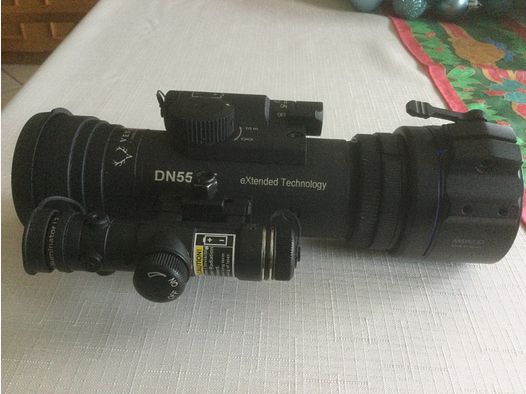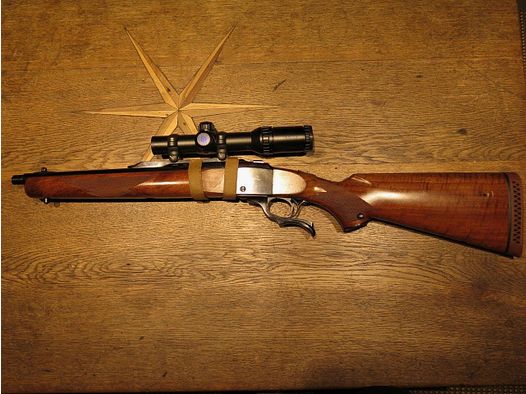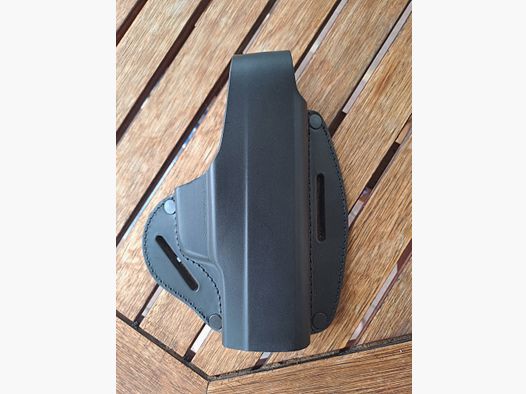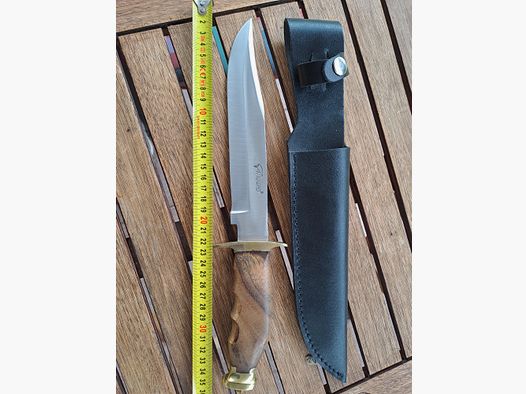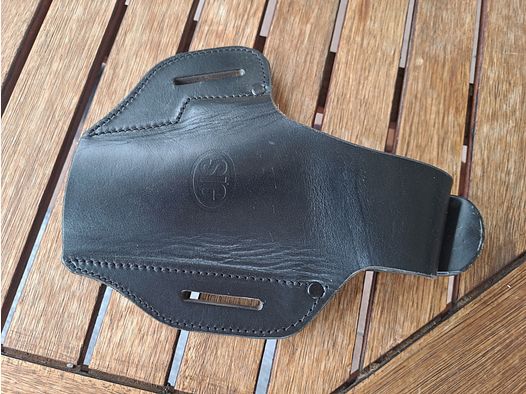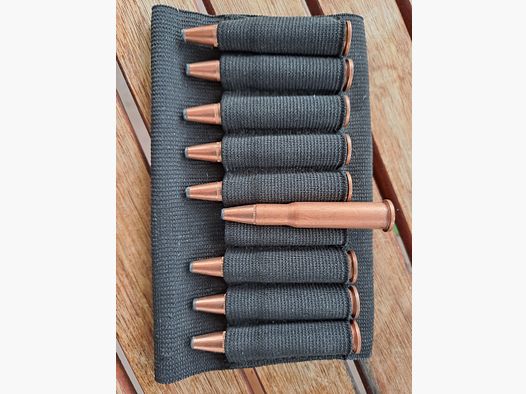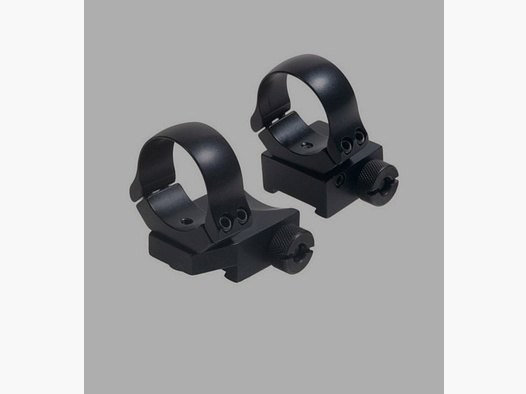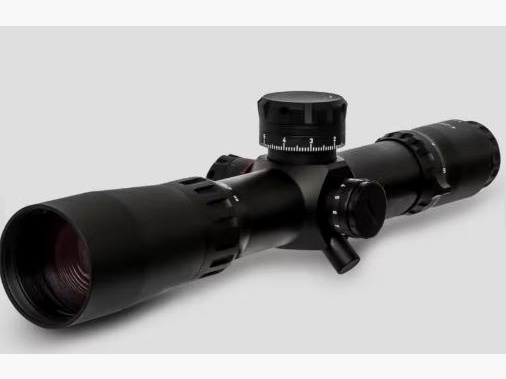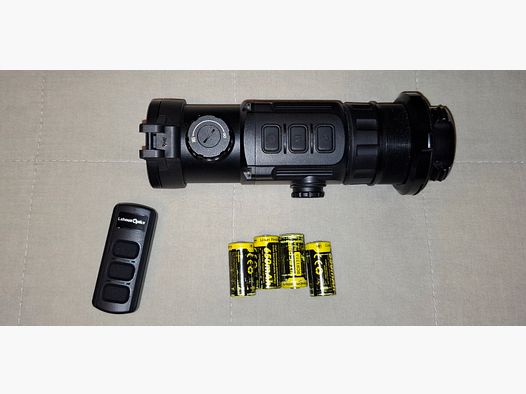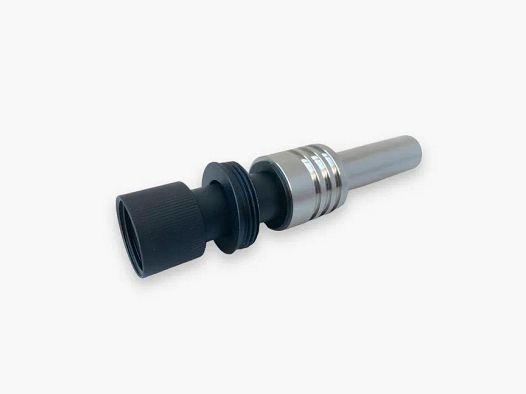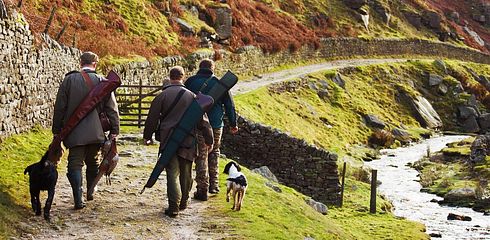Field, Forest, and Wildlife Belong Together!
Agriculturalists and forest owners have a legitimate interest in keeping wildlife damage to a minimum or compensating for it. But the hunter must also do everything possible to avoid unpleasant surprises regarding wildlife damage that has been contractually assigned to him in the hunting lease agreement.
Costs for reforestation of fallow land amount to approximately €10,000.00 / Ha. PEFC standards must be adhered to. If this is not to be destroyed by deer, roe deer, and mouflon, wildlife damage must be kept low on these areas. Especially in the first three to five years, it is crucial for roe deer until "the plants have grown out of the browse."
Instigators who degrade hunters to pest controllers without the existing hunting district system and demand the total culling of all deer by any means do not do justice to this conflict of interest. But hunters must also be willing to explore new paths away from a "business as usual" approach.
Legal Foundations for Wildlife Damage Regulation
These can be found in the various state hunting laws, state hunting regulations, and state regulations for the implementation of state hunting laws, as well as the Federal Hunting Act. Wildlife damage caused by ungulates, and, for example, wild rabbits or pheasants on land that belongs to a communal hunting district or is affiliated with a communal hunting district is compensated; there are many exceptions. The hunting community is generally liable for compensation. Unless the hunting lessee has taken on this obligation in the hunting lease agreement, which is very often the case.
How Can the Hunter Defend Against Claims for Compensation Due to Wildlife Damage?
Agriculturalists, forest owners, and hunting lessees should plan new plantings and protective measures as bindingly as possible in consultation. Intermittent hunting of roe deer, especially in calamity areas, and culling of wild boar is the responsibility of the hunters, whereby the forest owner and the farmer can and must support as outlined in the following agreement if they wish to successfully assert wildlife damage. Only such a goal-oriented collaboration guarantees a good future for forests with wildlife. The parties should agree on a joint approach, for example, as follows:
Sample Text for a Wildlife Damage Agreement
Sample text for an agreement regarding wildlife damage to corn and meadow areas and forest areas in the area of the hunting community Y
Between farmer Mr. X, .... the hunting community Y as the lessor, the hunters of the hunting district ...., ….
Due to the wildlife damage that occurred in the past to the corn and meadow areas as well as the forest areas in the area of the hunting community ..., the parties agree on the following measures to avoid wildlife damage:
The farmer Mr. X informs the hunting rights holders in good time – at least three days before sowing and harvesting, e.g., corn – about the upcoming work, so that the hunters can take appropriate measures or, in the fall, can remove wildlife fences again.
The farmer Mr. X leaves a strip of at least 70 cm free around each cornfield so that the hunters can set up an electric fence against wild boar damage. The hunters can create sight corridors to the forest edge, hunting corridors, hunting facilities, and baiting areas on the fields. For this harvest loss, Mr. X receives __________ € / hectare per year.
The hunters set up an electric fence around the currently ____ known cornfields and maintain it accordingly.
The farmer Mr. X sprays the area of the fence with permissible herbicides according to his care of the cornfields, so that the maintenance effort for the hunters is correspondingly reduced. Areas where plant protection products may only be used to a limited extent are exempt from this regulation, and thus the fence must be mowed free in this area.
The hunters inform the owners/tenants of the areas about wildlife damage, especially to corn and meadow areas and reforestation areas, in writing upon detection – see attachment below. The timing of damage regulation is also determined.
By creating planting and hunting corridors in the forest cultures, clearing the cultures to facilitate hunting, and early information about new planting plans, hunting is supported. A path and visitor guidance should be established at the new planting areas. Also, walkers, mountain bikers, and other forest visitors should be made aware of these calamity areas. (See the so-called Bechener Declaration of the District Hunting Association Rheinisch Bergischer Kreis, see www.ljv-nrw.de)
The ongoing communication between the hunting lessee and land and forest owners, e.g., annual joint inspections for further coordination, is regularly implemented.
Further measures ...
Information on Wildlife Damage
Wildlife damage on a grassland / corn area
forest area
Field / forest area: ----------- area size approx.__________ sqm
Damaged trees/plants: ____________________
The damage should be regulated by _____________________________ (month/year), at the latest before the spring of the following year.
The signatory commits to contact the responsible owner/tenant/farmer in good time to regulate the damage.
Sample City, the _______ Signature of the hunting lessee:
------------------------------------------------------------------------------
The hunting lessee is obliged under § 1 Abs. 2 Federal Hunting Act to avoid wildlife damage as much as possible. Hunters should make concrete proposals to the farmer and forest owner for damage reduction.
Often, the farmer/forest owner resists cooperation to prevent wildlife damage to corn and meadow areas or browsing damage to forest areas. He will then not enter into an agreement. But the farmer and the forest owner must also cooperate to avert a potential shared fault with the hunting lessee. We summarize some statements from literature and jurisprudence regarding the mutual obligations of the parties, see in detail: Article by attorney Jürgen Reh in RdL 01/2020:
§ 254 BGB is based on the legal idea that anyone who disregards the care that appears necessary to protect themselves from damage must accept the loss or reduction of their damage claims up to 100%.
A claim-excluding shared fault should affect the farmer/forest owner who makes certain sowings or plantings where, based on the situation of the chosen property ("situational dependence") and the choice of the crop to be cultivated, excessive wildlife damage can be expected with certainty.
It is inappropriate to pursue the highest possible yield without regard to the situational dependence of a property. The farmer cannot be prescribed what to grow on his fields. However, this freedom of cultivation methods can lead to him having no claim for wildlife damage compensation in the case of (predominant) shared fault.
The Federal Court of Justice also believes that, as an expression of the social obligation of property (Art. 14 Abs. 2 GG), wildlife damage must be tolerated by the owner to a certain extent without compensation. The extent of this obligation is determined by the location and condition of the property, as well as its embedding in the landscape and nature, thus its "situation." Therefore, tolerating certain wildlife damages fundamentally represents an expression of social binding.
The farmer also bears shared fault if he, without regard to the situation and in knowledge of the non-huntability of an area (corn up to the forest edge, no planting distance of 6m to the property boundary in the forest), refrains from creating effective hunting opportunities, for example, by establishing hunting corridors in the main crop and sight strips between the main crop and the forest edge. Furthermore, keeping the edge areas, which do not belong to the cultivated property, clear is a matter of course.
Examples of Shared Fault of the Farmer from German Jurisprudence
- Improper land management, for example, by plowing under soil crops or underplowing chopped, unharvested corn with subsequent grain sowing (District Court of Schwerin; judgment of 8.11.2002, 6S 269/01)
- Failure to establish hunting corridors in the main crop and sight strips between the main crop and the forest edge (Belling in Staudinger: Commentary on the BGB, new edition 2008, § 835 BGB, Rn. 3)
- Clearly wildlife damage-prone cultivation (District Court of Garmisch-Partenkirchen in Rdl 1968, 243; District Court of Bad Segeberg in MDR 1952, 167); e.g., particularly wildlife damage-prone crop at a known wildlife damage-prone forest edge (Englaender in AgrarR 1976 p. 40)
Wildlife damage prevention is therefore demanded not only from the hunting lessee but also from the farmer and forest owner. § 32 BJG is to be interpreted accordingly, that the cultivating farmer must enable and tolerate protective measures. § 254 of the Civil Code (BGB) "shared fault" goes even further and requires participation in damage prevention. Depending on the susceptibility of the crop to damage, more or less participation obligation is required according to BJG.
For shared fault to apply, hunters should document precisely which damage reduction measures the affected farmer/forest owner has refused when, where, and how, in the presence of whom. A comprehensive documentation is always useful. Regarding the method of documentation, especially for corn, photographic documentation is always the best; either from an elevated position or by drone.
And if it does go to the procedure and the lawsuit
Traps of the Preliminary Procedure (NRW)
First, it must be checked whether liability for wildlife damage has been effectively transferred to the hunting lessee through a valid agreement in the hunting lease contract.
Another requirement is a proper preliminary procedure. A deficient preliminary procedure in wildlife damage leads (under certain circumstances) to the inadmissibility of the claim for payment of wildlife damage, e.g., § 35 Abs. 1 State Hunting Law NRW.
We present a sample examination of wildlife damage in grassland below. Different deadlines and requirements apply to damages in the forest.
A proper wildlife damage report for wildlife damage in grassland requires that the injured party informs the competent authority according to § 34 BJG within a week about when he has identified which damages at which location on which plants, so that the administrative authority can assess these damages regarding type, extent, and time of occurrence. Only if the extent, location, and type of individual damages are documented and evaluated precisely is sufficient distinguishability ensured. Doubts are to the detriment of the injured party. In order for the administrative authority and the wildlife damage expert commissioned by it to assess the reported damage concretely, it must be possible to distinguish it from older damages, whether reported or not, and from younger damages that have not yet been reported. Especially on areas that have already been affected by wildlife damage multiple times, a control rhythm of one week should be applied.
Depending on the federal state, a conciliation procedure may be interposed following the report.
If no amicable agreement is reached, the authority promptly arranges a site appointment with the contracting parties (including the hunting community) and the local wildlife damage estimator.
The injured party should not agree to collective appointments under any circumstances, as he would then find himself in significant evidentiary difficulties in a subsequent court proceeding.
And he should have the report confirmed in writing each time. All this presupposes, of course, that he checks his grassland at least once a week. A bound notebook with corresponding entries and confirmation by witnesses is advantageous, as it can be presented to the court as documentary evidence.
A significant time gap of over 2 months between the damage report and the actual appointment at the damage site is of great importance because it no longer allows for a distinction between potentially liable old damages that were not reported in time. In this respect, the legislator has made a clear regulation in § 37 Abs. 1 LJG NRW, according to which an appointment at the damage site must take place promptly.
The term "promptly" is legally defined in the context of contestation in § 121 Abs. 1 Sentence 1 BGB and means "without culpable delay." This indeterminate legal term is specified in the LJG NRW in such a way that a concentration and acceleration maxim must be observed for the entire preliminary procedure. Because the preliminary procedure loses its purpose if it is not conducted promptly by the competent municipality. See Thies/Müller-Schallenberg, JagdR Nordrhein-Westfalen, p. 278e
The prompt scheduling of an appointment at the damage site aims to ensure that not only all possibilities of an amicable settlement are exhausted but that, if necessary, a damage assessment is initiated without delay. In the context of the LJG NRW, "promptly" therefore means as soon as possible. This means that an appointment must be scheduled within a maximum of 48 hours and conducted within a further maximum of 48 hours. See Thies/Müller-Schallenberg, JagdR Nordrhein-Westfalen, p. 278d. The injured party should absolutely refuse so-called collective appointments at a later date.
However, if the appointment is scheduled, for example, months after the damage report, the characteristic of being prompt is clearly no longer fulfilled. The consequence is that the distinction between old and new damages is no longer possible, as a temporal connection is no longer given.
This also makes it impossible for the expert involved in the preliminary procedure with the wildlife damage assessment to distinguish between compensable new damages and non-compensable old damages. The plaintiff's assertion that this distinction could have been made without problems comes reflexively but is not sufficient.
A delayed summons solely for an assessment appointment does not meet the requirements.
At the first assessment appointment, the wildlife damage estimator should ideally be summoned and present. The parties involved, especially the claimant, should request this immediately. Securing evidence is extremely important for enforcing claims! Summons and protocols should be carefully checked.
Procedure of the Site Appointment
At the beginning and also during the course of the site appointment, the representative of the authority attempts to reach an amicable settlement. The wildlife damage estimator determines the extent of the damage and prepares a protocol with the designation and type of the property, species of wildlife, and extent of the damage according to area size and the result, the damage amount. A certain degree of discretion is inherent in the nature of the matter. The statements also include graphic and photographic representations of the extent of the damage as well as the surrounding situation (see VG Cottbus, judgment of 27.08.2015 - 3 K 935/13).
From this, the authority prepares a preliminary decision with a legal remedy instruction.
If none of the parties contests it, the preliminary decision becomes legally binding.
The compensation for damages is based on § 249 BGB on the total damage in money; because a restoration of the status quo ante is no longer possible. And the procedural costs are also part of the damage; even if municipalities repeatedly want to share these costs under the application of § 40 Abs. 3 LJG NRW.
This would also be unfair because it would deter the injured party from reporting due to the anticipated cost burden in the case of small-scale damages. And then the farmer later has the problem of reliably distinguishing old damages from new damages. As a result, the entire claim for damages is no longer enforceable.
See also: AG Siegburg, judgment of 16.2.2011 118 Ca 186/10; AG Meschede 6 C 50/17 of 27.6.2017
Lawsuit Procedure
In every lawsuit, it must be examined whether the required preliminary procedure according to § 36 Abs. 1 LJG NRW was not properly conducted according to §§ 36-41 LJG NRW and whether a serious defect exists, and whether the compensation for damages was correctly assessed.
If necessary, the hunting lessee should also let it come to a legal dispute. Sometimes it is educational for the allegedly injured party in the long run if the amount of damage coincides with shared fault or if formal defects in the preliminary procedure cause difficulties.
Wildlife Damage Assessment – Preliminary Assessment, Evidence
For the procedure, we refer to the articles
https://ljv-hessen.de/wp-content/uploads/2017/05/Wildschadensregulierung2.pdf
https://www.gstb-rlp.de/gstbrp/Forsten und Jagd/Jagdgenossenschaften/Aufs%C3%A4tze/Wildschaden und Wildschadensregulierung/Rechtliche Grundlagen und das Verfahren beim Wildschadensersatz (Schriftenreihe LWK RLP, pdf)/Rechtliche_Grundlagen_Wildschadensersatz.pdf
The standard work on the subject: Wildlife and Hunting Damage Compensation, Handbook for Damage Settlement with Calculation Bases and Tables, published by Carl Link Verlag September 2017, loose-leaf, 470 pages; 978-3-556-75400-9 (ISBN)





